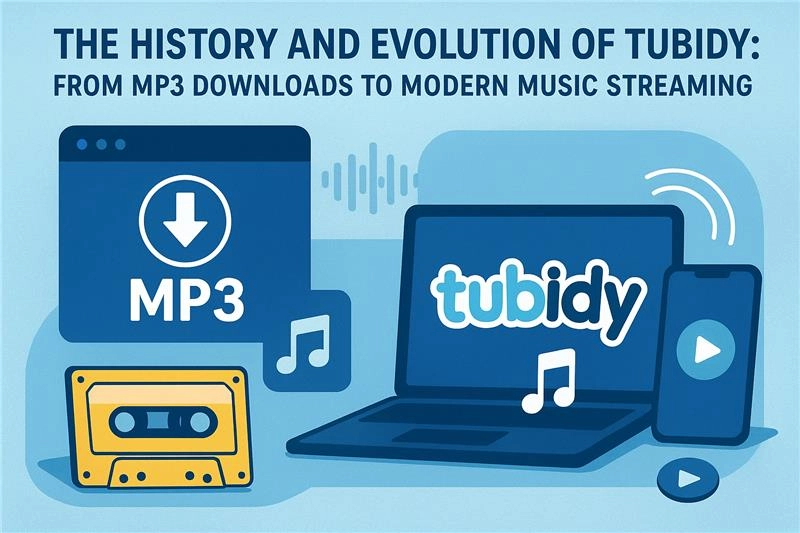The History and Evolution of Tubidy: From MP3 Downloads to Modern Music Streaming

Introduction
Before streaming giants like Spotify or Apple Music dominated the scene, Tubidy was one of the internet’s most popular destinations for free MP3 and MP4 downloads.
Millions of users visit Tubidy every day to search, listen to, and download their favorite songs, especially in regions where paid streaming platforms are not easily accessible.
But how did Tubidy begin? And how has it evolved over the years to stay relevant in the modern music landscape? Let’s explore the history and evolution of Tubidy, from its early roots to its present-day transformation.
1. The Early Days: Birth of Tubidy (Late 2000s)
Tubidy launched around the late 2000s, during a time when mobile phones were becoming internet-capable and MP3 downloads were in high demand.
Originally, Tubidy started as a mobile-friendly search engine that helped users find and download music and videos from around the web. Its main goal was simplicity — users could enter a song name, and Tubidy would display matching MP3 or MP4 files optimized for mobile devices.
Key features in the early phase:
- Lightweight mobile interface (perfect for slow connections)
- Simple MP3 and MP4 download system
- No registration required
- Accessible from almost any device
Tubidy quickly gained traction in countries where high-speed internet and paid streaming services were still limited.
2. Global Expansion and Popularity (2010–2015)
Between 2010 and 2015, Tubidy became a global hit. It wasn’t just a download site; it was a community for discovering new songs, sharing videos, and exploring international music trends.
At its peak, Tubidy attracted millions of monthly visitors, mainly from:
- Africa
- South Asia
- Latin America
People loved Tubidy because it was free, fast, and mobile-first, long before “mobile-first” became a mainstream concept in web design.
Notable improvements during this period:
- Video to MP3 conversion support
- Better music categorization
- Faster search results
- WAP/mobile version for feature phones
3. Challenges in the Streaming Era (2016–2020)
As major platforms like Spotify, YouTube Music, and Apple Music took over, Tubidy’s traffic began to shift.
Streaming services offered legal, high-quality, and ad-free listening experiences, also reducing the demand for manual MP3 downloads.
Additionally, copyright laws became stricter, and many third-party sites faced domain bans or takedowns.
However, Tubidy adapted by:
- Focusing more on being a music/video search engine
- Improving mobile usability and speed
- Partnering with third-party content sources
4. The Modern Tubidy: Smart Search and Simplicity (2021–Present)
Today, Tubidy continues to operate as a lightweight MP3 and video search platform, optimized for both desktop and mobile users.
While it no longer hosts copyrighted files directly, it still serves as a media aggregator, helping users find publicly available music and videos from other platforms.
Modern features include:
- Mobile-responsive design
- Fast MP3 and MP4 download processing
- Integration with modern browsers
- Cleaner, ad-light interface
Tubidy’s strength remains in its simplicity and accessibility, appealing to users who want quick, no-login access to media files.
5. What’s Next for Tubidy?
As internet access improves and streaming becomes universal, Tubidy’s role may continue to shift from a download-focused tool to a music discovery hub.
Future versions may include:
- Integration with licensed streaming APIs
- Safer and legal content partnerships
- Enhanced mobile app experience
Whatever the direction, Tubidy’s evolution mirrors the global shift in how we consume music—from offline downloads to online streams.
Conclusion
From its humble beginnings as a simple MP3 search tool to its ongoing evolution in 2025, Tubidy’s journey is a fascinating look at how technology, user habits, and global access to music have changed.